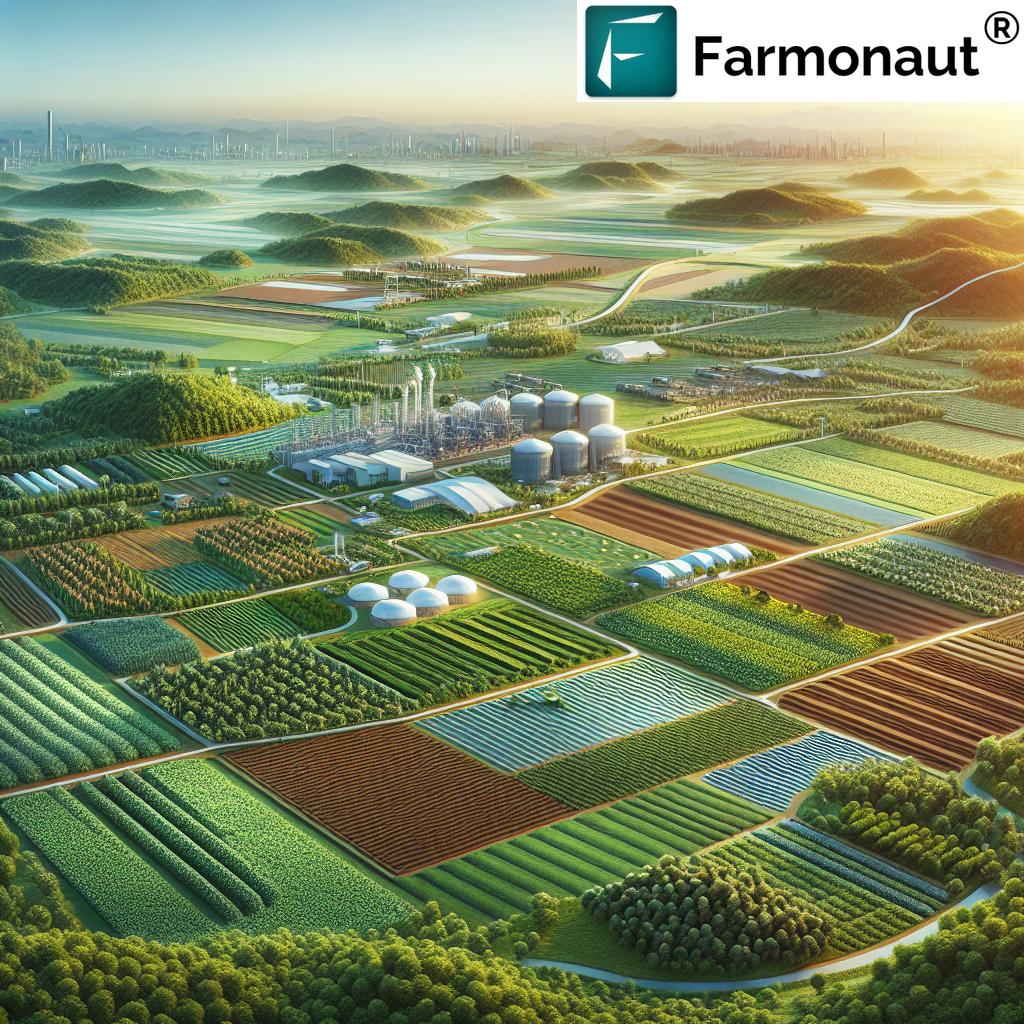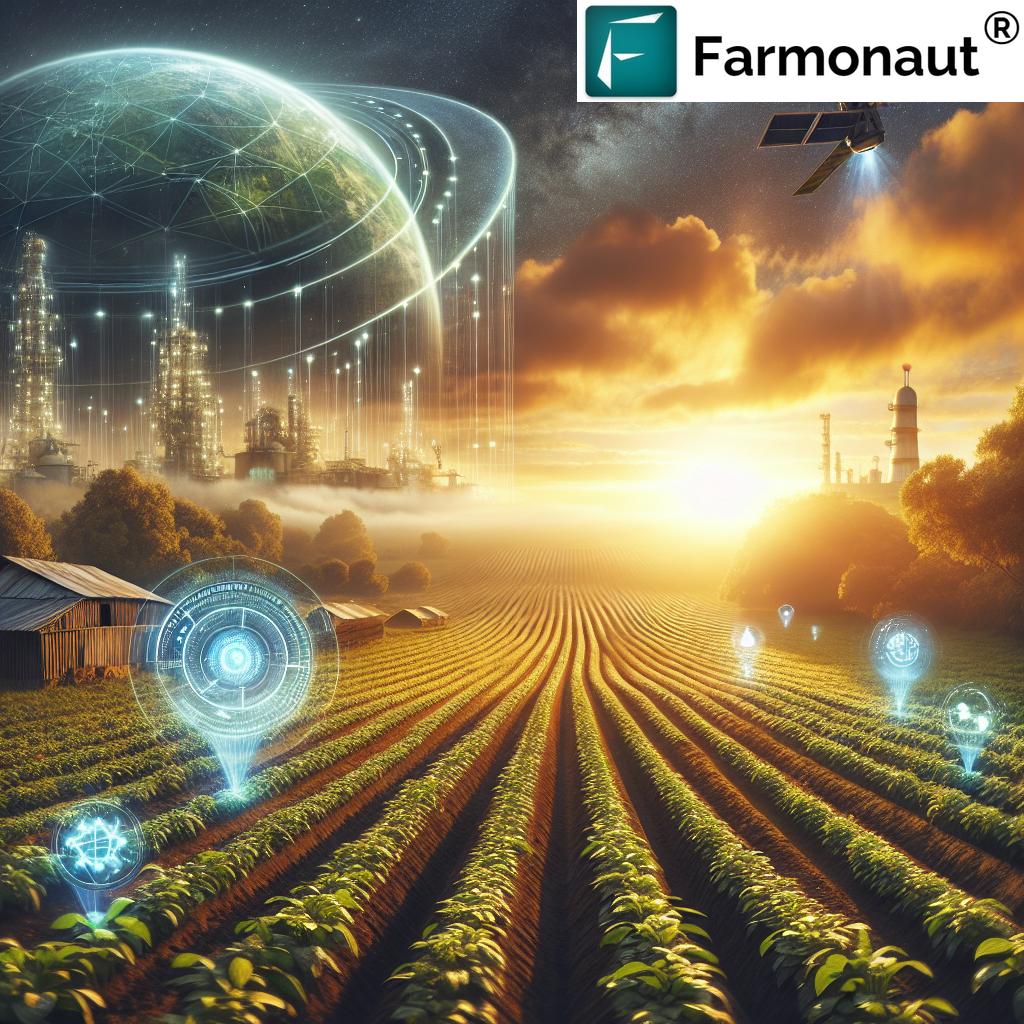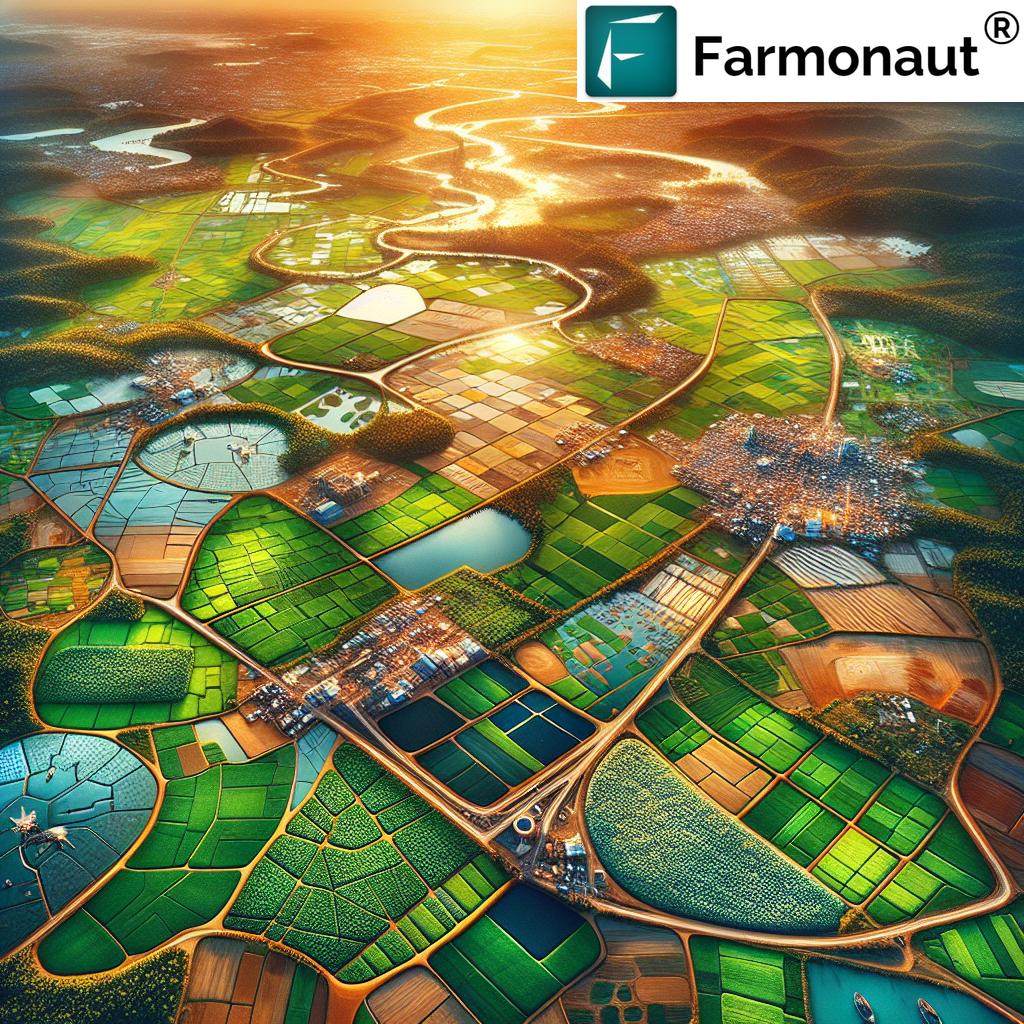Agriculture in United Arab Emirates: 7 Key 2025 Innovations

Summary:
Agriculture in the United Arab Emirates: Innovations and Sustainability in 2025
The United Arab Emirates (UAE)—known primarily for its vast deserts and oil wealth—has made remarkable strides in transforming its agricultural sector. As of 2025, agriculture in united arab emirates stands at the crossroads of technology, innovation, and strategic policy. The landscape reflects a compelling blend of high-tech farming, urban resource optimization, and environmental stewardship aimed at securing food for the nation and its future generations.
“UAE plans to boost vertical farming output by 300% by 2025 through advanced hydroponic systems, maximizing limited land use.”
The Context: Challenges Shaping Agriculture in United Arab Emirates
Agriculture in united arab emirates faces a unique confluence of geographical, climatic, and resource-related challenges that set it apart from traditional agricultural regions.
- Extreme Aridity: The UAE is a desert country with sparse rainfall—often less than 100 millimeters annually. With temperatures soaring above 40°C in summer, growing crops outdoors is extremely difficult.
- Scarcity of Natural Resources: Limited arable land and poor soil fertility constrain traditional farming. Water scarcity remains a critical constraint—with agriculture consuming a significant percentage of the nation’s freshwater, even as supply is limited and costly.
- Food Security Concerns: With a growing population and over 85% of food imported, food security is at the center of national policy.
- Supply Chain Fragility: Disruptions during the COVID-19 pandemic demonstrated the fragility of global supply chains and underscored the urgency of domestic production in UAE.
- Environmental Sustainability: Overuse of groundwater, sand encroachment, and high carbon emissions from traditional systems create environmental and climate sustainability challenges.
In 2025, these difficulties have pivoted policy makers, private investors, and innovators to deploy advanced agricultural innovations, optimized technology, and strategic resource management—transforming the agricultural landscape and redefining farming in adverse conditions.
7 Key 2025 Innovations: Feature Comparison Table
The table below distills the essence of agricultural innovations transforming the UAE, providing a clear overview of their impact.
| Innovation | Description | Estimated Adoption Rate in UAE (2025) | Projected Yield Improvement (%) | Sustainability Benefits | Major Implementing Regions |
|---|---|---|---|---|---|
| Precision Irrigation & Smart Resource Management | Use of sensors, AI, and satellite monitoring to optimize water and nutrient supply for crops | 80% | +25% | Reduced water usage by up to 60%, lower fertilizer runoff | Dubai, Abu Dhabi, Sharjah |
| Vertical & Urban Farming | Multi-story indoor farms using LED, climate control, and minimal land footprint | 75% | +30% | Land and water conservation, shortened supply chains | Dubai, Abu Dhabi |
| Advanced Hydroponics & Aquaponics | Soilless systems using water recirculation and fish-plant symbiosis | 60% | +35% | Up to 90% less water, minimal pesticides, higher density production | Dubai, Abu Dhabi, Al Ain |
| AI, Satellite, and Drone Technologies | Real-time crop health, soil, and weather monitoring for data-driven farm management | 70% | +22% | Enhanced efficiency, lower need for manual labor, better resource planning | Dubai, Abu Dhabi, Northern Emirates |
| Genetic Crop Improvement | Breeding and biotechnology for salt- and drought-tolerant crops | 55% | +20% | Improved yields in poor soils, less dependency on water | Abu Dhabi, Fujairah |
| Blockchain-Based Traceability | Digital records for transparent, secure food and resource supply chains | 40% | +10% | Reduces fraud, improves consumer trust, food safety | Dubai, Abu Dhabi, Nationwide |
| Sustainable Policies & Circular Systems | Government-led frameworks for organic, green, and circular agriculture | 65% | +15% | Carbon reduction, waste minimization, ecosystem restoration | Dubai, Abu Dhabi, Sharjah |
Unlocking Food Security: The 7 Innovations Transforming UAE Agriculture in 2025
“By 2025, over 90% of UAE’s new farms will employ smart greenhouses, significantly reducing water consumption.”
1. Precision Irrigation & Smart Resource Management
Precision in water usage is not just a necessity in UAE’s desert climate—it is the foundation of contemporary agriculture in united arab emirates. By 2025, advanced AI- and satellite-driven irrigation systems enable farmers to apply the exact amount of water required, tailored to each crop’s stage of growth and environmental context.
- Key Technologies: Smart soil moisture sensors, remote weather stations, satellite imagery (NDVI, NDWI), and AI-driven water advisory systems
- Benefits:
- Reduces water consumption by up to 60%
- Boosts crop yields by providing optimal hydration
- Decreases energy costs by minimizing unnecessary pumping
- Impact: Widespread adoption in Dubai, Abu Dhabi, and emerging agricultural zones
Such precision farming not only optimizes limited water resources, it supports the UAE’s carbon footprint reduction goals by curbing water wastage and lowering the energy input needed for irrigation.
Our Farmonaut platform supports real-time monitoring and AI-guided decision-making, available via web, Android, and iOS apps—empowering on-the-ground managers and decision-makers with actionable insights to optimize every drop.
2. Vertical & Urban Farming: From Dubai to Abu Dhabi
The idea of stacking fields skyward has moved from futuristic vision to urban reality in agriculture in united arab emirates. By 2025, vertical farming integrates seamlessly within Dubai’s and Abu Dhabi’s urban fabric.
- Intensity and Efficiency: Layered shelves allow production of leafy greens, microgreens, and herbs with a minimal land footprint.
- Advanced LED and Climate Control: Adaptive lighting maximizes photosynthesis, while sealed environments maintain temperature and humidity for year-round productivity.
- Proximity to Consumer: Grown within city limits, these crops have fewer “food miles”—reducing spoilage, transport emissions, and response time during supply chain interruptions.
- Environmental Benefits: Vertical systems contribute to reducing water and fertilizer usage while maintaining high nutritional quality.
UAE’s government aims to triple vertical output by harnessing smart greenhouses, nurturing urban agriculture, and incentivizing private sector participation.
3. Advanced Hydroponics & Aquaponics Systems
Both hydroponic and aquaponic farming enable UAE to defy its arid climate and limited water resources by cultivating crops without soil—directly in nutrient-rich water or through fish-crop ecosystems.
- Controlled Environments: Hydroponic farms in Dubai and Abu Dhabi use greenhouse technologies and automated feeding to achieve year-round, pesticide-free production.
- Water Conservation: These systems recirculate water—achieving as much as 90% reduction in water usage compared to field agriculture.
- Integration Potential: Aquaponic setups combine aquaculture (fish farming) with hydroponics, maximizing output and sustainability.
Hydroponic output now includes lettuce, strawberries, kale, and more, with aquaponics producing both fresh vegetables and fish protein in ecosystem harmony.
These soil-less methods have become mainstream in new Arabian farms, driving both large scale farm management efficiency and sustainability.
4. AI, Satellite, and Drone Technologies
Smart farming is data-driven farming. By 2025, the agricultural sector in UAE leverages AI-powered monitoring, satellite imaging, and autonomous drone technologies for real-time crop, water, and soil analysis.
- Satellites: Multispectral satellite images analyze vegetation health (NDVI), water stress (NDWI), and soil quality for precise, scalable monitoring.
- AI-Driven Insights: Platforms like the Jeevn AI Advisory System use weather and satellite data to provide tailored recommendations for irrigation, fertilization, and disease prevention.
- Drones: Automated crop scouting and targeted spraying help detect and address pest and nutrient issues before they escalate, reducing inputs and increasing yield.
For agricultural enterprises and individual farmers, Farmonaut’s real-time satellite-based monitoring and AI advisory tools deliver actionable insights for optimizing inputs, minimizing environmental impact, and maximizing yield—all accessible via the Farmonaut App, web or API (API Access Here).
Fleet management solutions also leverage this data to optimize vehicle and machinery use, improving efficiency in large farms and agro-clusters.
5. Genetic Crop Improvement for Arid Environments
Traditional crops struggle in UAE’s harsh soils and saline groundwater. The focus on biotechnology and advanced breeding has resulted in engineered date palm, barley, legumes, and specialty crops tailored to flourish on poor soil and with less water.
- Salt- and Drought-Tolerant Cultivars: Addressing the region’s critical constraint of water scarcity and soil salinity
- Emphasis on Quality and Resilience: Enhanced date palm varieties offer higher yields, resilience to pests, and premium fruit quality—essential for domestic use and export.
- Cutting-edge Research: Genomic mapping and marker-assisted breeding drive rapid crop adaptation.
Government support and private research investment have positioned the UAE as a regional leader in superior, climate-resilient crop production. This development is critical for reducing import dependency and sustaining food security in challenging conditions.
6. Blockchain-Based Traceability & Secure Food Systems
Food security goes beyond production. As the agricultural sector in UAE matures, blockchain-based digital records are crucial for:
- Supply Chain Transparency: Ensuring that every step of food production, processing, and distribution is traceable and auditable
- Consumer Trust: Authenticating food origins, reducing fraud risk, and increasing confidence in local products
- Regulatory Compliance: Meeting global food safety standards for international trade and domestic health
Farmonaut’s blockchain traceability tools allow the agricultural supply chain management sector to track, secure, and verify the journey of resources or produce from field to consumer. This is particularly vital for high-value exports like dates and superfoods.
7. Sustainable Policies, Circularity, and Carbon Management
Sustainability drives government initiatives and sector-wide practices in 2025. The UAE’s National Food Security Strategy 2051 highlights commitment to circular agriculture, carbon reduction, and environmental restoration.
- Circular Systems: Waste-to-energy projects turn agricultural residues into bioenergy, while water recycling within farms lowers total usage and nutrient runoff.
- Organic and Green Practices: A rising share of UAE farms operate on organic or near-organic principles, relying on compost, reduced chemical inputs, and biological pest management.
- Carbon Footprint Monitoring: Real-time carbon impact tracking helps enterprises comply with national standards and unlock green financing.
Afforestation and Desert Greening: Urban clusters expand green belts with native tree species, not only combating desertification and sequestering carbon but also reducing ambient temperatures in rapidly growing cities.
How Farmonaut Empowers Innovation for UAE Agriculture
As agriculture in united arab emirates races into a data-driven era, satellite insights, AI, and digital tools underpin everything from resource efficiency to environmental stewardship.
- Satellite Monitoring: We use satellite images to deliver insights on crop health, soil quality, and irrigation efficiency, accessible on your desktop, Android, or iOS device. Satellite-based decisions mean smarter resource allocation and higher profitability.
- Jeevn AI Advisory: Our AI system analyzes data for real-time guidance on irrigation, disease management, and yield optimization—personalized to each UAE farm’s environment and resource constraints.
- Blockchain Traceability: Secure, digital proof of origin safeguards food quality, reduces fraud, and aligns with UAE’s export and consumer safety standards.
- Environmental Monitoring: Carbon footprint tracking helps users quantify and reduce emissions, supporting green branding and regulatory reporting.
- Resource Management Tools: Our fleet management and large farm modules cut costs, improve equipment use, and are crucial for sustainable scaling.
- API and Integration: For agricultural enterprises and tech developers, we provide dedicated API endpoints and full developer documentation—for custom analytics, platforms, and IoT integrations across the UAE region.
Whether you are optimizing a hydroponic farm in Dubai, vertical greenhouses in Abu Dhabi, or a community urban plot in Sharjah, our goal at Farmonaut is to make satellite-driven intelligence affordable, actionable, and sustainable.
Explore subscriptions:
The Future of Agriculture in United Arab Emirates: 2025 and Beyond
The journey of agriculture in UAE is far from over. Innovation does not stop—it evolves.
- AI & Robotics: Expect advanced robotics for automated harvesting, seeding, and greenhouse management, minimizing labor challenges and further boosting efficiency.
- Expanding Urban Farming: Rooftop agriculture and indoor gardens will further transform city food security, dovetailing with large-scale management for supply resilience.
- Smarter Policy Making: Data-driven government initiatives, informed by real-time environmental monitoring, will optimize the allocation of water, land, and support for high-impact agricultural areas.
- Sustainable Financing: By integrating satellite-driven loan and insurance verification, financial access for innovative farmers and agribusinesses will increase, further reducing barriers to technology adoption.
In summary, agriculture in united arab emirates in 2025 is a testament to human ingenuity and strategic resolve. By harnessing innovations in technology, crop management, sustainability, and smart policy, the UAE is feeding its future—efficiently and responsibly.
Never before has the desert environment witnessed such a rapid, green revolution—one that others in the world’s most arid areas may soon follow.
Frequently Asked Questions (FAQ) – Agriculture in United Arab Emirates
1. What are the major challenges for agriculture in the United Arab Emirates in 2025?
The UAE faces extreme aridity, scarce water resources, poor soil fertility, limited arable land, and a rapidly growing population. These factors make traditional farming methods extremely difficult, necessitating technological and policy-driven innovations.
2. How does vertical farming help optimize land and water usage in Dubai and Abu Dhabi?
Vertical farming leverages multi-story, climate-controlled facilities to grow crops using far less land and water. This technique maximizes yield per square meter and recycles water, enabling year-round urban food production in both Dubai and Abu Dhabi.
3. What technological advancements support UAE’s food security strategy?
Innovations include precision irrigation, hydroponics, AI- and satellite-based farm monitoring, drone-assisted crop management, and blockchain food traceability. These tools collectively address water scarcity, improve efficiency, and ensure a resilient food supply.
4. What role does Farmonaut play in supporting UAE agriculture?
Farmonaut offers satellite monitoring, real-time AI advisory, blockchain-based traceability, environmental impact tracking, and resource management tools—enabling farms, enterprises, and governments to optimize resources, enhance productivity, and meet sustainability goals.
5. How is carbon management integrated into agricultural practices?
Techniques such as waste-to-energy conversion, water recirculation, organic farming, and real-time carbon monitoring (as enabled by platforms like Farmonaut) help UAE farms minimize carbon emissions and qualify for sustainable investments.
6. What are the main crops grown in the UAE, and how are they adapted to desert conditions?
Key crops include salt-tolerant barley, dates, and specialized legumes, as well as high-value vegetables grown hydroponically or indoors. Genetic improvement and advanced cultivation methods ensure these crops thrive with minimal water and in poor soils.
7. How can startups and innovators gain access to agricultural data and digital tools in UAE?
By leveraging platforms providing dedicated APIs and applications (such as Farmonaut’s API and developer resources), innovators and businesses can integrate advanced satellite and AI-driven insights into their systems for optimal farm and resource management.

Ready to experience the next level of agriculture in united arab emirates?
Try the Farmonaut App today!











